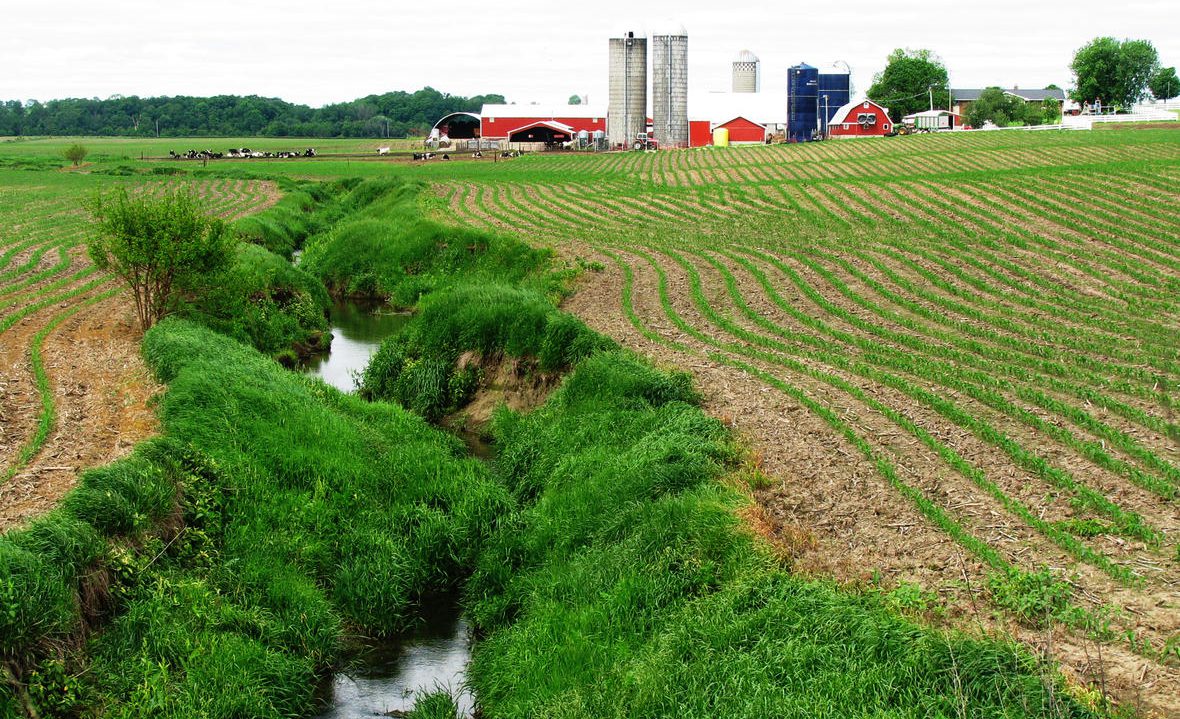Lake Erie, one of our nation’s largest sources of fresh water and home to numerous recreational opportunities, plays a vital role in the success and health of surrounding economies and populations. In recent years, harmful algal blooms (HABs) have been a source of concern due to their frequent appearance and abundance in the lake. These HABs occur from a combination of factors, including excessive nutrient runoff from non-point sources and warmer temperatures. Significant increases in dissolved reactive phosphorus (DRP) over the last decade have been linked with the increased production of HABs.
The Institute of Water Research at Michigan State University has been involved in several initiatives to address nonpoint source pollution in the Western Lake Erie Basin. The Accelerating Conservation Adoption in the River Raisin project, coordinated by the Institute, focuses on reducing phosphorus runoff and soil erosion from farms through conservation practices such as no-till or conservation tillage, planting cover crops to maintain cover over the winter months, constructing filter strips, rotating crops annually, and implementing improved nutrient management strategies.
This project brings together a unique partnership of 15 organizations comprised of local conservation professionals, farmers, agribusiness associates, university partners, and government entities and utilizes innovative online conservation tools to reduce phosphorus in a cost-effective manner.
The project also utilizes modeled results from the Great Lakes Watershed Management System (GLWMS) to evaluate conservation practice applications. Applications are ranked on their ability to reduce phosphorus for the least cost (i.e., dollar/pound of phosphorus reduced). The GLWMS uses a calibrated SWAT model, developed by the University of Michigan Water Center, to estimate phosphorus reductions. Local partners including the Lenawee Conservation District, Farmer-led Watershed Conservation Group, River Raisin Watershed Council, Washtenaw Conservation District, Monroe Conservation District, Michigan Agriculture Environmental Assurance Program, Crossroads Farm and Wildlife Association, and MSU Extension help promote the program and enroll producers.
Currently halfway through the project, over 1,300 acres of cover crops have been implemented through this program, keeping over 2,700 lbs. of phosphorus and 550 tons of sediment out of waterways that drain to Western Lake Erie. Assistant Director at IWR and project lead Jeremiah Asher gave an update on the project stating, “We have had a great first year with this new project! Our partners and participating producers have been instrumental in helping us achieve these results. By using a novel application method that only funds conservation practices and fields reducing the greatest amount of phosphorus, this program has become very cost effective. We are looking forward to working with new producers this coming year and continue improving water quality in Southeast Michigan and Western Lake Erie basin.”
Sign-up for the Accelerating Conservation program is ongoing through fall 2019. As the project nears completion, the Institute will work with project partners and advisors from the Michigan Agri-Business Association, Michigan Farm Bureau, Michigan Office of the Great Lakes, Great Lakes Commission, and The Nature Conservancy to evaluate the success of the program and identify lessons learned.
The Accelerating Conservation Adoption in the River Raisin project is supported by the Great Lakes Restoration Initiative. For more information, visit the project website at raisinconservation.weebly.com.





